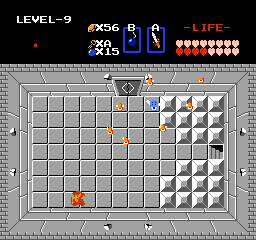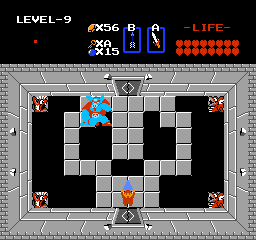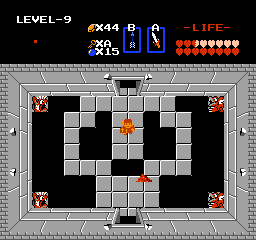The Legend of Zelda
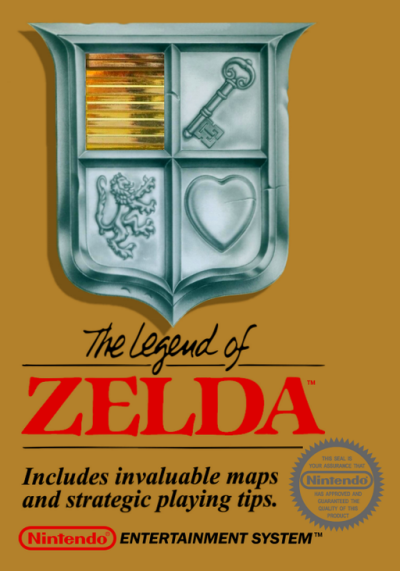
- Year: 1986
- Developer: Nintendo
- Publisher: Nintendo
- Genre: Metroidvania
- Players: 1
- Mapper: MMC1
- Size: 128KB
I tried to play this game a few different times over the years, but I never managed to stick with it for long. It wasn't until the first covid quarantines hit that I finally managed to push through the first couple dungeons, and after that, I was hooked. After beating Zelda 1 and loving it, I then beat Zelda 2, then Link's Awakening and the Oracles, then finally Link to the Past, before burning out on Zelda games for a while. But this page isn't about those other games, really. The first Zelda game definitely has some rough edges these days, but it's still a lot of fun, moreso than many other series that got their start in the 80s.
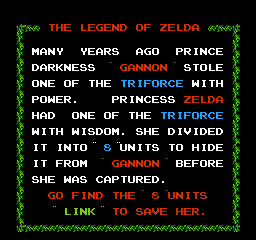
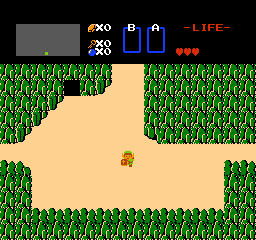

The first Zelda game plays much like the following games in the series: you play Link, and you must travel the world to assemble 8 pieces of the triforce, in order to go find and defeat Ganon and save the world. To do this, you must explore an expansive overworld to locate various upgrades, and eventually the 8 dungeons containing pieces of the triforce. Once you find a dungeon, you'll go room by room, fighting enemies, finding keys, and solving (very light) puzzles until you reach the boss. Once you defeat it, you receive a heart container for another heart on your hit bar, a piece of the triforce, and you're ejected from the dungeon. Unlike later games, this game doesn't feature special boss keys or any form of teleport, and minibosses are scattered somewhat randomly, with early dungeons having none, and later dungeons having as many as 2 or 3, with most minibosses being multiples of bosses you faced earlier.
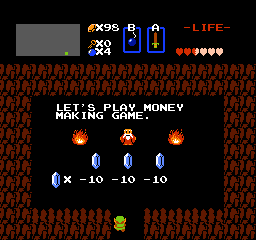
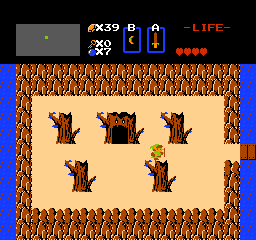
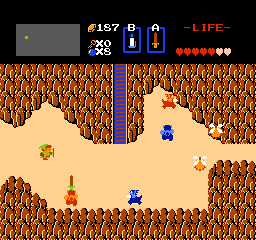
Dungeon difficulty progression is also sometimes hit or miss, with dungeon 6 in particular being much harder for me than the dungeons before or after it (seriously, fuck wizzrobes). The combat itself jumps between relatively simple and quite punishing, based entirely on how important movement is in the fight, as Link's movement is very stiff, and your attack is narrow and takes a while to complete before you can move again. Dungeon theming is limited to the map being shaped like whatever the dungeon is named, so the lizard dungeon looks (vaguely) like a lizard head, the moon dungeon looks like a crescent moon, and so on. Each dungeon contains at least one upgrade item, as well as a map and a compass, and this game definitely fits with the rest of the series in that the items are split 50/50 between genuinely useful items and items that are good for a couple puzzles in the dungeon you find them, then are never really used again. One specific item that comes to mind is the raft, which is used to get a heart container in the overworld, and to access the next dungeon, and then forgotten about completely.
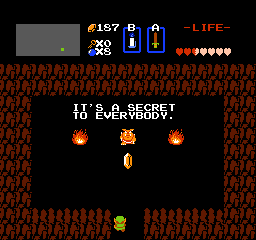
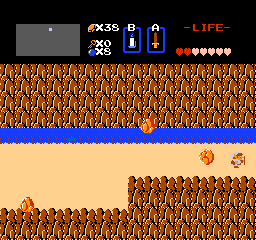
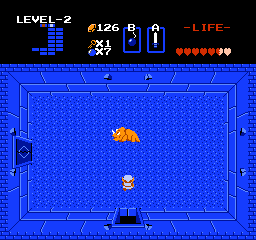
The puzzles mostly consist of clearing a room and pushing a specific block, bombing a specific unmarked wall, or using the item you unlocked recently, and are usually not hard to figure out, though this game doesn't mark bombable walls at all, or even let you stab them to get an audio cue like later games would, making some dungeons a bit of a trial and error exercise. This is especially true of Death Mountain, the final dungeon, which is a proper maze, a giant brick of rooms with one way doors, secret unmarked tunnels, and lots and lots of enemies. One of it's only saving graces is that you can get the master key before you enter the dungeon, so you don't have to go key hunting anymore, and also that it contains the red ring, which halves the damage you take while also turning Link (and Zelda, as they share a palette) bright red. The fight with Ganon at the end involves Ganon turning invisible and teleporting randomly while you stab the air wildly in hopes that you'll get lucky. Once you've hit him enough, he explodes into a bloody heap, and you go into the next room to find Princess Zelda surrounded by fire, which will absolutely kill you if you don't slash it away first (ask me how I know). Once you've freed her, the credits roll and the game kicks you back to the start to begin the second quest.
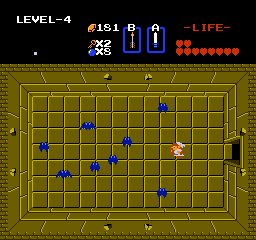
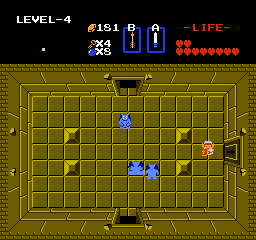
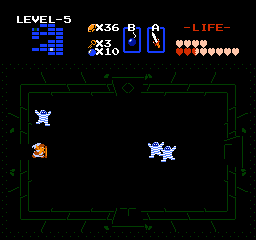
Overworld exploration is similar enough, with a vast (for the time) map to explore full of a variety of enemies not found in dungeons, as well as plenty of secrets and items to find. Bombing walls, burning trees, and pushing stones can all reveal caves containing people, be it an old woman selling healing potions, a pushy shopkeep selling equipment, a moblin offering money, or even people who will shout at you for blowing up their door and demand repayment. Some caves will also contain hints, and these are both helpful and sometimes baffling, as the age of the translation makes itself known. The questionable translations are usually rather charming, and it's generally not too hard to figure out what they were meant to say, and the game has so many hidden secrets that they're helpful either way really. Unlike the room-by-room dungeon maps, the overworld map consists of a blank grey rectangle with a little dot that moves around indicating where you are. It's better than nothing I suppose, but I regularly found myself referring to an relatively undetailed overworld map I found online. Maybe it's not the "correct" way of playing the game, but I've got a pretty bad sense of direction, and a lot of the screens look quite similar to each other, especially when you're trying to dodge enemies the whole time.
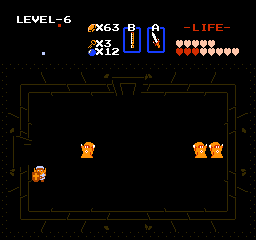
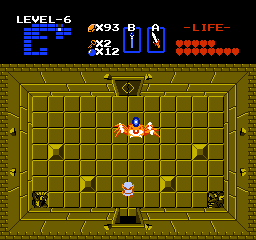
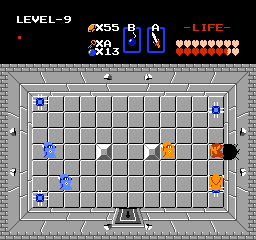
A lot of this review sounds pretty negative I'm realizing, but the truth is I had a lot of fun playing this, having just finished my 3rd playthrough to get screenshots for this article. It introduced a lot of the concepts the series would use for the next few decades, and it only looks worse in hindsight because other games had years and much more capable hardware to improve upon everything that made this game fun. And that's not even getting into the second quest, unlocked by beating the game once, which rearranges the location of all items and dungeons in the overworld, as well as the insides of the dungeons themselves. I've yet to play this one, mainly cuz I keep forgetting about it, but it's supposed to offer a much harder experience, with meaner item and enemy placements. Maybe one day I'll get around to it, but for now, I can say the Zelda 1 is still a fun game that holds up, so long as you can get your head around some questionable controls, and probably also get yourself some sort of overworld map.
